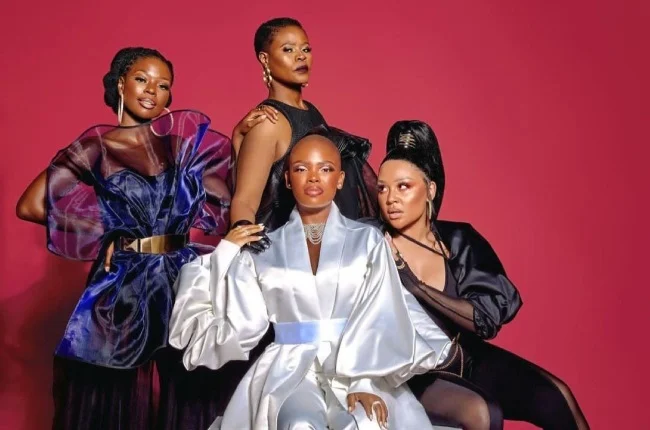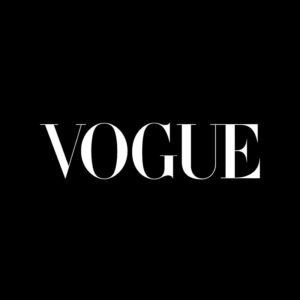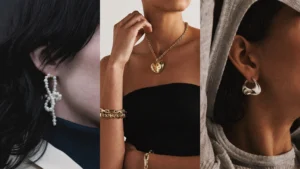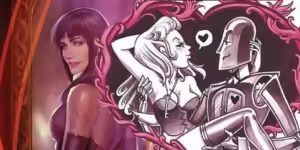
Rose Robe of Savage Beauty
Introduction
The world of fashion has always been about storytelling—communicating ideas, emotions, and cultural symbolism through fabric, design, and artistry. Among the many symbols that have woven their way into fashion is the rose, an iconic flower that has represented a myriad of ideas across civilizations: love, passion, mystery, purity, and even secrecy. When we juxtapose the rose with the term “savage beauty,” a concept emerges that blends natural elegance with raw, untamed allure. The phrase “rose robe of savage beauty” encapsulates a fusion of grace and wild intensity, a concept that has fascinated both the fashion industry and cultural historians for generations. This article will explore how the idea of “rose robe of savage beauty” can be interpreted in terms of fashion, culture, and deeper symbolism.
The Rose: Symbolism Across Cultures and Fashion
The rose is one of the most beloved flowers globally, celebrated not only for its physical beauty but also for its rich symbolic meanings. In ancient Greece and Rome, roses were linked to Aphrodite and Venus, the goddesses of love. They symbolized beauty, romance, and feminine grace, a motif that would follow them for millennia. Later in the renaissance period and in the Victorian era, these flowers assumed more layers of meaning, including secrecy; the Latin phrase *sub rosa*, or “undersignified confidentiality) and balance—combining the fragility of the petals with the dangerous thorns beneath.
In fashion, the rose has been used extensively as a motif, symbolizing these many layers of meaning. Designers from Christian Dior to Alexander McQueen have made the rose a central theme, often playing with its duality: the softness and delicacy of its appearance contrasted with the thorny, dangerous nature of its stem. Fashion icons have employed the rose as both a symbol of traditional femininity and subverted its softness to highlight strength, rebellion, and wild beauty. When we consider the phrase “rose robe,” it suggests a garment imbued with the qualities of the flower: perhaps a soft, flowing, romantic piece of clothing, but one that might also have an edge—something that evokes both beauty and power.
Savage Beauty: An Exploration of Untamed Allure
The word “savage” typically conjures images of the wild, the untamed, and the raw. In contrast to the controlled elegance of the rose, the term suggests a sense of freedom from societal constraints, of beauty that is not polite or restrained but rather fierce and unrefined. In recent years, the concept of “savage beauty” has gained popularity in fashion, largely due to the influence of avant-garde designers like Alexander McQueen, whose 2011 posthumous exhibition at the Metropolitan Museum of Art was titled *Savage Beauty*. The exhibition explored McQueen’s fascination with the darker side of nature and the human psyche, revealing how fashion could reflect both the sublime and the grotesque, the beautiful and the savage.
McQueen, in particular, was known for his ability to marry delicate craftsmanship with bold, often shocking, elements—creating a balance between the traditionally beautiful and the wildly untamed. His designs often featured floral motifs, including roses, but they were frequently paired with darker, more primal elements: leather, metal, and aggressive silhouettes. This is where the idea of the “savage” aspect of beauty comes into play. It is about rejecting the notion that beauty must be soft, gentle, or conform to conventional standards. Instead, savage beauty embraces a more primal, fierce form of attractiveness—one that is rooted in individuality, strength, and raw emotion.
Rose Robe of Savage Beauty: A Fusion of Symbolism
When we combine the ideas of the rose and savage beauty, we arrive at a concept that is as complex as it is captivating. The phrase “rose robe of savage beauty” evokes an image of a garment that embodies both the elegance and fragility of the rose and the raw, untamed force of savage beauty. It is a piece of clothing that would be simultaneously beautiful and fierce, delicate and powerful—perhaps a gown with flowing, petal-like layers but also adorned with sharp, thorn-like embellishments. This duality is at the heart of what makes the concept so compelling. It is not about choosing between beauty and strength but rather embracing both in equal measure.
Fashion, in many ways, is a reflection of society’s changing attitudes toward beauty and identity. The 21st century has seen a growing movement toward inclusivity and self-expression in fashion, with designers increasingly rejecting narrow definitions of beauty in favor of more diverse and eclectic interpretations. The “rose robe of savage beauty” is an apt metaphor for this shift, much like the variety of Christmas gifts that embody both tradition and innovation. It suggests that beauty can be both traditional and rebellious, soft and strong, refined and raw. This fusion of qualities allows for a more expansive understanding of what it means to be beautiful—and, by extension, what it means to be human.
The Influence of Nature in Fashion Design
Nature has always been a powerful influence in fashion, and the rose is perhaps its most iconic symbol. But beyond the rose, other elements of the natural world—wild animals, forests, and landscapes—have played an essential role in shaping fashion’s aesthetic vocabulary. Designers like McQueen, John Galliano, and Iris van Herpen have drawn inspiration from the untamed beauty of the natural world to create garments that evoke both awe and danger. This interplay between the natural and the savage, the beautiful and the dangerous, is a central theme in fashion, especially in haute couture, where designers have more freedom to experiment with bold ideas.
The “rose robe of savage beauty” concept also ties into the broader trend of sustainability and eco-conscious fashion, where designers are increasingly looking to nature for both inspiration and solutions. Sustainable fashion emphasizes the use of natural materials and ethical production practices, but it also celebrates the inherent beauty and imperfection of natural elements. Just as a rose’s beauty is enhanced by its thorns, so too can fashion find elegance in the rough, the imperfect, and the wild.
The Future of Fashion: Embracing Duality
As we look to the future of fashion, the idea of embracing duality—both beauty and strength, elegance and rawness—will likely continue to shape the industry. The concept of the “rose robe of savage beauty” serves as a potent reminder that fashion is not just about clothes; it is about expression, identity, and storytelling. In a world that is increasingly diverse and complex, fashion must evolve to reflect these realities, offering garments that are as multifaceted and dynamic as the people who wear them.
In conclusion, the “rose robe of savage beauty” is a powerful metaphor for the evolution of fashion and beauty. It encapsulates the idea that beauty does not have to conform to traditional standards of softness and delicacy. Instead, it can be fierce, raw, and untamed, much like the wild rose growing in a forgotten corner of the forest. As fashion continues to push boundaries and explore new ideas, the fusion of the rose’s elegance and the primal force of savage beauty will remain a compelling and enduring theme.
Conclusion
In conclusion, the concept of the “Rose Robe of Savage Beauty” beautifully illustrates the dynamic interplay between softness and strength, grace and wildness, that has captivated both the world of fashion and human imagination. The rose, with its historical symbolism of love, beauty, and secrecy, paired with the notion of savage beauty, challenges conventional ideals by embracing untamed, primal allure. This duality—elegance intertwined with raw intensity—speaks to fashion’s evolving narrative that celebrates individuality and the rejection of narrow definitions of beauty. Whether in haute couture designs or everyday fashion, the rose robe of savage beauty represents a fusion of nature’s fragility and ferocity, a reflection of the complexities of identity and self-expression. As we move forward, this potent metaphor will continue to inspire creativity, embodying a future where beauty is as multifaceted as the people who wear it.
FAQ’s
1. What does the concept of “Rose Robe of Savage Beauty” represent in fashion?
The “Rose Robe of Savage Beauty” symbolizes a powerful fusion of elegance and untamed beauty. It merges the softness and fragility of the rose with the raw, primal allure of savage beauty. In fashion, this concept is represented by garments that embody both grace and strength, challenging traditional notions of femininity and beauty by embracing both refinement and wild intensity.
2. How has the symbolism of the rose been used historically in fashion?
Historically, the rose has been used in fashion to represent love, beauty, and femininity, drawing from ancient symbolism in cultures such as those of Greece and Rome. Designers like Christian Dior and Alexander McQueen have embraced the rose as a central motif, using it to convey both traditional feminine qualities and subversive themes, such as rebellion and strength, by playing with the flower’s duality of softness and thorns
3. What does “savage beauty” mean, and how has it influenced fashion?
“Savage beauty” refers to the untamed, fierce, and raw form of attractiveness that contrasts with traditional, polite, and restrained beauty. It celebrates individuality and strength, often embracing darker, more primal elements. Designers like Alexander McQueen have championed this idea, creating collections that blend delicate craftsmanship with bold, edgy components, resulting in a powerful statement on beauty’s multifaceted nature.
4. How do nature and sustainability influence the “Rose Robe of Savage Beauty” concept?
Nature plays a significant role in shaping the concept of the “Rose Robe of Savage Beauty,” as the rose itself symbolizes the natural balance between fragility and danger. In recent fashion trends, sustainability and eco-consciousness have driven designers to embrace natural elements in their work, finding beauty in the rough and imperfect aspects of the environment. The concept ties into the growing movement towards ethical fashion practices and the celebration of nature’s inherent beauty.
5. How does the “Rose Robe of Savage Beauty” reflect modern attitudes towards fashion and beauty?
The “Rose Robe of Savage Beauty” reflects modern fashion’s embrace of inclusivity and diverse beauty standards. It challenges conventional norms by merging the delicate and fierce, offering a more complex and expansive view of beauty. This concept resonates with contemporary ideas of self-expression, individuality, and the rejection of narrow definitions of femininity, making it a symbol of both personal and cultural transformation in fashion.






